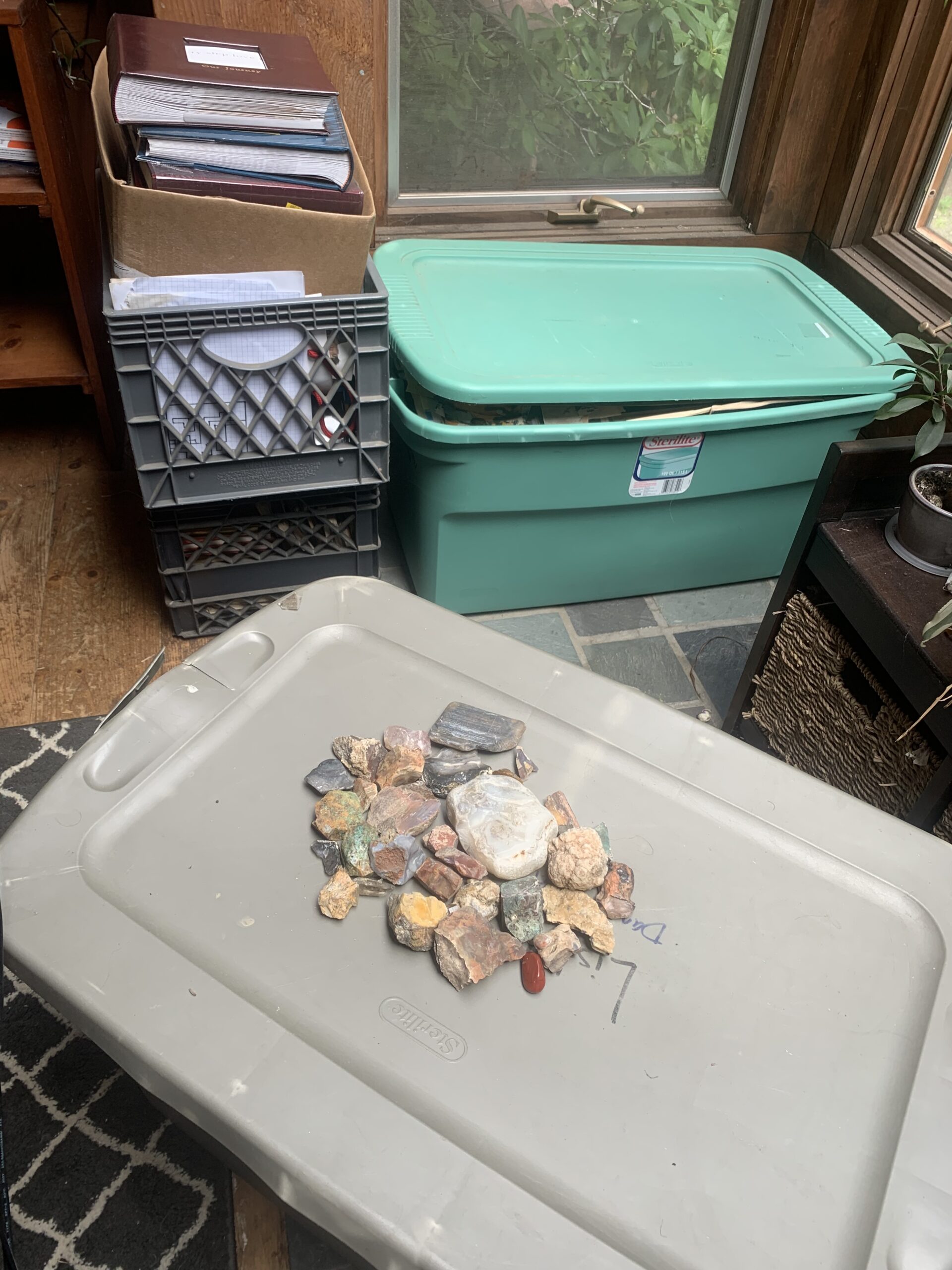
We are continuing to make slow progress in dismantling our home– er re-homing of all the possessions we’ve built up over the last 25 years. The goal is to whittle it all down to one box of “paper” mementos and one box of family heirlooms and gifts and not much else.
The rest of the stuff is going either to our children (who all have apartments to fill) or a future tag sale.
We haven’t gotten to the emotional part yet– though I expect, that when it his us, the loss of all those years worth of stuff will feel both freeing and like a punch in the gut.
With these things around, chachkas from my grandparents, gifts from long ago birthdays, kids’ art and photos, it’s easy to feel connected to our past.
But, here’s the thing: we still will.
Here are 10 practical steps to help you in getting rid of your stuff.
- Plan to start the process at least 3 months before your leave date. This stuff is hard, both emotionally and physically. Give yourself time.
- Start with the easy stuff. Go through the barely-used drawers, closets and cupboards and throw/give away the things that you clearly don’t want or need. Rule of thumb: If you haven’t used them in the last year, you don’t need them!
- Sort your stuff: Make space for at least 4 boxes or bins. One for the thrift store, one to keep, one to sell, and one for stuff that’s going with you.
- Sell the big stuff– Do you have things that are worth significant money? Here are some steps to re-homing them
- Ask your friends first (Perhaps they will want to buy them)
- Use Craigslist, eBay and Facebook Marketplace
- Take specialty items to specialty stores & dealers (For example, I had some lovely kitchie artwork that went to a fancy resale shop in the area)
- Make a plan for nostalgia For us, items that had sentimental value were by far the hardest to part with. We had stacks and stacks of kids’ artwork, photos, mementoes and gifts. Even baby clothes and blankets that elicited such strong memories they could make us cry. But you can’t keep it all. Nor should you! Side note: Did you know that Nostalgia used to be considered a mental illness Anyway, here’s are some heart-friendly ways to deal with these items
- Take pictures of your (old) pictures. That way you can keep them in the cloud whether or not you physically keep them
- Use exemplars– Got 30 pictures from one event? Choose the top 10. Your memories will fill in the rest.
- Lean on Family— Give your stuff to the people who love it the way you do. You can enjoy the memories they bring you when you visit
- Write and record! Make a family memories podcast or a shared album of pictures for the whole extended family to enjoy. These things take up less space but have huge emotional sway.
- Now that you’ve sold the valuable things and made plans for the nostalgia. Give stuff away
- Use internet resources such as “curb alerts” on Facebook, Freecycle and the “free” category on Craigslist
- Bring your stuff to the Thrift store (Goodwill, Savers and the Salvation Army will take your stuff. There are also tons of great local thrift stores you can try)
- Include a “buy-back clause” for the hard things. You probably won’t want to buy your stuff back (…going out on a limb here to say you will absolutely NOT want your stuff back.) But if you think you might have regrets, give/sell your stuff to a friend with takebacksys. We did this with our beautiful blue canoe, which we loved but knew it would not fit into our new lifestyle. We also did it with a beautiful work of art that my Aunt made. My sister has it until we have space for it once again.
- Use positive self talk. It is HARD to do this work. Let yourself feel what you feel. Also, remind yourself that it is ONLY STUFF. You are responding to the meaning held by that lumpy clay piece made by your great uncle, not the piece itself. Your love for your uncle is real and it is the important part. The thing is just a thing.
- Don’t ditch alone! When our children were visiting at the beginning of the summer, we went through boxes and boxes of old art and writings. We laughed, we cried, and we tossed a whole lot of it out! The stuff we kept was the stuff we found ourselves sharing, reading aloud, or telling stories about. It was a lovely evening and it helped me find my way through the overwhelming sense of loss/nostalgia in good spirits.
- Plan for too much: We did all the above steps but pretty quickly realized we would have more than two bins’ worth of stuff. Paying for a storage unit is an option– but also a horrible waste. Where we are, the smallest unit costs $65 a month. That’s two lovely restaurant meals… or a weeks’ worth of groceries… or several road showers. I am way too cheap for this option! We had to come up with a better plan. Which was to use our old family mini-van as a storage unit. We have enough space to park it in one of our farm’s outbuildings, full up with stuff we are hoping to keep. When we return, we will move it to the next place, or the kids will want it, or we will feel ready to ditch it.
Discover more from Crazy Brave Adventure
Subscribe to get the latest posts sent to your email.

